Waryong Gisa Sikdang(와룡기사식당)
10.4Km 2020-11-26
8 Taerigeumsan-ro Andong-si Gyeongsangbuk-do
+82-54-854-8980
It is a Korean restaurant with 20 years’ tradition. This Korean dishes restaurant is located in Andong-si, Gyeongsangbuk-do. The most famous menu is braised chicken.
Iljik Sikyuk Sutbul Garden (일직식육숯불가든)
10.5Km 2021-03-24
2474-9, Pungil-ro, Andong-si, Gyeongsangbuk-do
+82-54-858-0103
It is a house where you can enjoy Korean traditional bulgogi. This Korean dishes restaurant is located in Andong-si, Gyeongsangbuk-do. The representative menu is bulgogi hot pot.
An dong gotak Esanru [Korea Quality] / 안동고택 이상루 [한국관광 품질인증]
10.7Km 2020-09-10
3193-6, Pungsantaesa-ro Seohu-myeon, Andong-si, Gyeongsangbuk-do
+82-54-843-3328 / +82-10-3522-1542
'Andong City in Gyeongsangbuk-do Province is a town of culture and folk traditions where one can trace the long history of eminent families. It is also a symbol of time-honored tradition to the extent that the name Andong reminds people of traditional Korean hanok houses. Isangru, an ancient hanok house with a history of 2,590 years, located in the foothills of Mt. Cheondeungsan, served as a venue for the memorial rite for Kim Seon-pyeong, the progenitor of the Andong Kim clan and a meritorious government official during the reign of King Taejo of the Goryeo Dynasty. Isangru, meaning ‘a tall majestic building built on frosty ground’, is a two-story wooden building with a tiled roof characterized by elegant curves that form a half-hipped shape when viewed from the side. The house consists of two accommodations, Taejangtaesa and Isangru, arranged in a ‘ㅁ’ shape. The large door located in the middle of the ground floor offers an open view of the beautiful natural environment including a pine grove, a pond, and wild flowers. Built in 1750, this hanok house shows its age in its wooden pillars, stone walls, and interiors decorated with wooden engraving on the handrail. Guests can stay in a room heated with wood in winter, or in a tent for a different experience in summer. The house has been well maintained with various repair works, and underwent extensive renovations, including the wallpaper and floors, in 2013. Although it is close to a road, the house is surrounded by old trees, creating the impression that it is situated in the middle of a dense forest. A path runs between ancient pine trees on the road leading to the house. There is a pond with water lilies and white lotus flowers in front of the house, while various species of wild flowers including big blue lily turf, plantain lily, montane aster, and asters come into full bloom around the house in their respective seasons. Fully maintained by the Andong Kim clan, Isangru is a large structure that can accommodate many people and is used to hold clan assemblies. This tall building is also used as a venue for concerts, seminars and traditional hands-on experience programs for students, including tea ceremony, masked dance, natural dyeing, hanji (Korean paper) crafts, and filial duty education programs. The house also offers guests a traditional nobleman’s dining table including various wild vegetable dishes for breakfast. Isangru is popular among Korean and foreign guests who want to experience traditional Korean culture or enjoy a relaxing stay with their parents amid beautiful nature. In addition, it is located between Hahoe Folk Village and Dosanseowon Confucian Academy in Andong, and offers easy access to other nearby tourist attractions including Bongjeongsa Temple, which is the oldest wooden building in Korea and is just three minutes’ drive away, and the two-hour-long Dulegil Trail.
Byeolcheongung (별천궁)
12.0Km 2021-03-30
141, Bongjeongsa-gil, Andong-si, Gyeongsangbuk-do
+82-54-857-4168
It is a restaurant with a hanok interior. This restaurant's signature menu is set menu with grilled salted mackerel. This Korean dishes restaurant is located in Andong-si, Gyeongsangbuk-do.
Oryuheon House [Korea Quality] / 오류헌 [한국관광 품질인증/Korea Quality]
12.2Km 2023-04-13
18-15, Gireumaje-gil, Andong-si, Gyeongsangbuk-do
Oryuheon House, located near Imhaho Lake in Andong, Gyeongsangbuk-do, offers a chance to stay in a historic house from the Joseon period. The house, also known as Mogwa House, was built by Kim Won-jung, the third son of Sukjong-era rector of the National Academy Kim Bang-geol, when he formed a family of his own in 1678. It was designated as the National Folk Cultural Heritage No. 184. The door’s wooden frame and the open floor space exemplify the beauty of the literati house of the Joseon period, while the sarangchae (men’s quarters) and daemunchae (gate quarters) showcase the sophisticated architecture of the era. Anchae (women’s quarters) retains its original appearance, while the sarangchae was rebuilt in 1920. The construction of the Imha Dam in 1990 resulted in the house’s relocation to its present location.
The owner of the house resides in anchae and sarangchae. Guests have access to a space that includes a 2-kan room, which can accommodate up to 4, an open floor space, and a bathroom. Cooking is prohibited in the house, but guests can make use of a grill located on a small yard reserved for the guests. Korean-style breakfast, including menus like chicken porridge or lotus leaf rice, are offered free of charge in the morning. Nearby sights include the water sports activities in Imhaho Lake, Manhyujeong Pavilion, Hahoe Village, and Dosanseowon Confucian Academy.
Andong Susan Sikdang (안동수산식당)
12.2Km 2021-03-24
64, Yutongdanji-gil, Andong-si, Gyeongsangbuk-do
+82-54-859-9779
It is a store where you can enjoy fresh seafood. This Korean dishes restaurant is located in Andong-si, Gyeongsangbuk-do. The representative menu is cold raw fish soup.
Escuela de Protocolo de Andong (안동예절학교)
12.5Km 2023-04-07
Toegye-ro 1333-5, Waryong-myeon, Andong-si, Gyeongsangbuk-do
+82-54-841-0511
En la Escuela de Protocolo de Andong se pueden aprender las etiquetas y los modales tradicionales de Corea. Se encuentra ubicada en la ciudad de Andong, una región histórica que conserva la cultura confuciana y las tradiciones del pasado. La institución también ofrece clases interactivas de la ceremonia del té; para aprender a tocar instrumentos musicales como el janggu (tambor pequeño con forma de reloj de arena) y el gayageum (cítara de 12 cuerdas); participar en los juegos folclóricos, el yunnori (lanzar palos al aire) y el neoltwiggi (balancín); y otras muchas actividades culturales, como aprender la danza de máscaras, elaborar artesanías en papel tradicional hanji, preparar platos típicos, realizar la ceremonia de la boda tradicional y practicar deportes acuáticos en el río Nakdonggang. El lugar también es famoso porque en sus cercanías se encuentran otros destinos turísticos como la Academia Neoconfuciana Dosan Seowon y el Museo de la Ciencia Forestal.
Jukheon Traditional House[Korea Quality] / 죽헌고택 [한국관광 품질인증]
12.6Km 2020-12-10
24, Taejangjukheon-gil, Seohu-myeon, Andong-si, Gyeongsangbuk-do
+82-10-5217-2174
Located near Bongjeongsa Temple in Andong, Gyeongbuk, the Historic House of Jukheon (Gyeongsangbuk-do Folk Cultural Heritage No. 146) was built in 1886 by renowned independence fighter Kim Ga-jin (1846-1922) and sold to Yi Hyeon-chan (courtesy name: Jukheon) in 1890. The house is now used as the shrine (Jaesa) of his family. It would be a great cultural experience for anybody to welcome the rising sun at a historic building such as this.
Meeting the sunrise from this historical heritage is sure to be the highlight of one’s trip. The house follows the square layout characteristic to the late Joseon period houses. The house itself is surrounded by old pine trees that add to the charm of the house.
Jukheon Traditional House has four Korean traditional rooms, namely the 2-person Jukheon Gallery, Study, Elisabeth Room and the 4-person Jukheon Dongnong Room. The house demonstrates the traditional beauty of Korean houses like the wooden platform hall built upon the stone foundations, screens, and roofs with exposed beam. The screens open to the view of the stone fence and the mountains far away. Elizabeth Room was constructed to commemorate the visit of Her Majesty Queen Elizabeth II of United Kingdom to UNESCO World Heritage site Bongjeongsa Temple in 1999. ‘Queen Elizabeth Road’ stretches from the Jukheon Traditional House to the Bongjeongsa Temple, allowing the guests to trace Her Majesty’s visit with their own steps. A mill with a thatched roof, located to the side of the complex, allows the guests to experience the traditional stepping mill. The pillar of the mill building is adorned with flags from all over the world, testifying to the many international visitors who have stayed at the house. Guests can also enjoy a free breakfast of toast, coffee, and other simple fare on the open hall of the building.
Hakgasan Chamma Sikdang(학가산참마식당)
13.4Km 2021-04-09
677, Bukpyeong-ro, Andong-si, Gyeongsangbuk-do
+82-54-868-7456
It is a good house with delicious dishes including fresh yams, where side dishes are cooked every morning. This Korean dishes restaurant is located in Andong-si, Gyeongsangbuk-do. The most famous menu is bulgogi.
Templo Bongjeongsa (봉정사) [Patrimonio de la Humanidad de la Unesco]
13.5Km 2023-05-23
Bongjeongsa-gil 222, Seohu-myeon, Andong-si, Gyeongsangbuk-do.
Edificado en el 12º año del reinado de Munmu de Silla, es una de las construcciones de madera más antigua del país. La zona en donde se encuentra ubicada el templo posee un ambiente natural puro, es decir, la condición ideal para proteger la salud. Además, a diferencia de otros templos que se van remodelando y adaptan un estilo más contemporáneo, el templo Bongjeongsa sigue conservando la tradición budista de la antigüedad en lo alto de la montaña. Este templo fue fundado por el monje Neungin en el año 672, durante el reino de Silla.
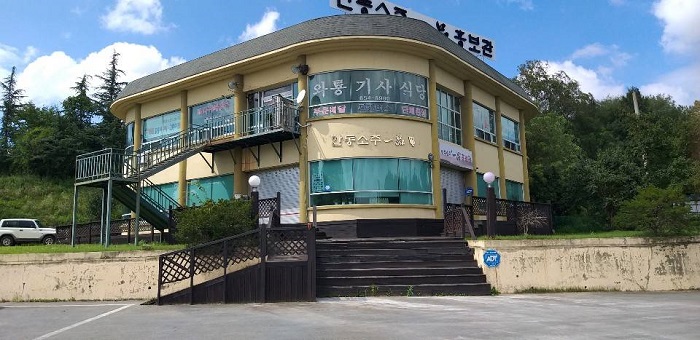
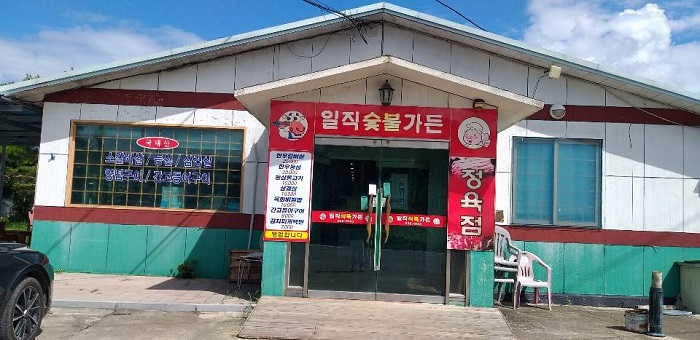
![An dong gotak Esanru [Korea Quality] / 안동고택 이상루 [한국관광 품질인증]](http://tong.visitkorea.or.kr/cms/resource/65/2579465_image2_1.jpg)
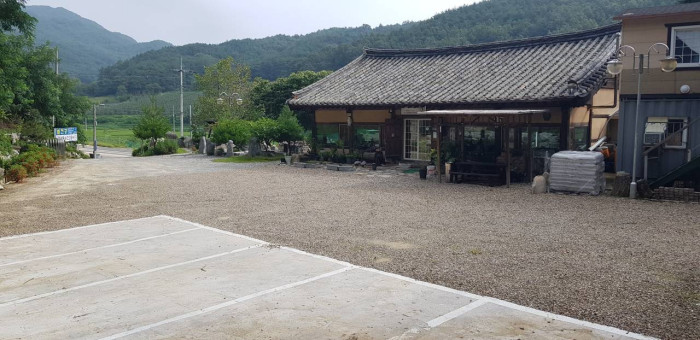
![Oryuheon House [Korea Quality] / 오류헌 [한국관광 품질인증/Korea Quality]](http://tong.visitkorea.or.kr/cms/resource/29/2706129_image2_1.jpg)
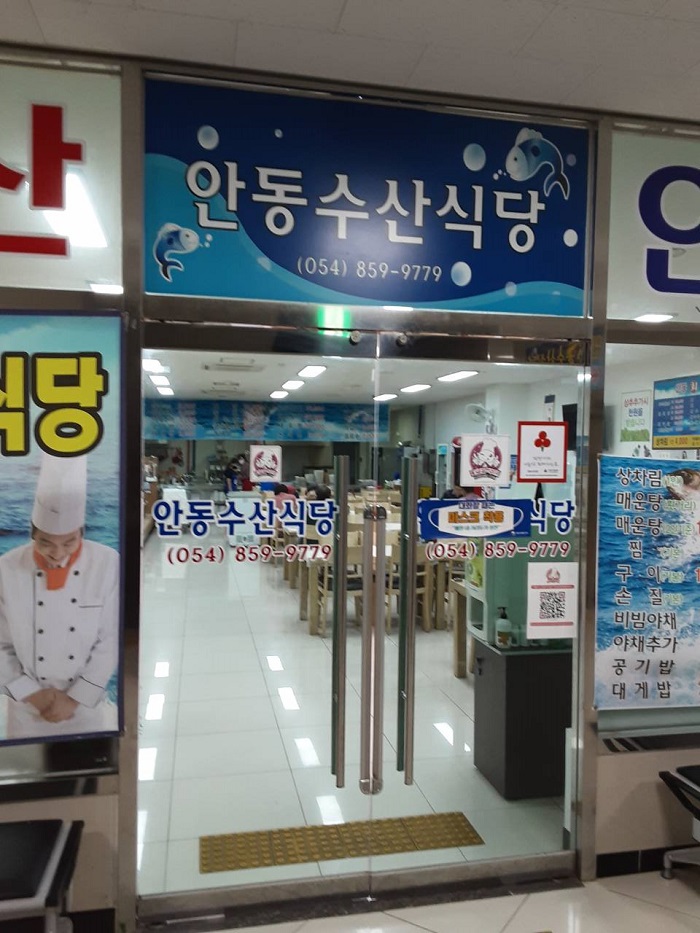

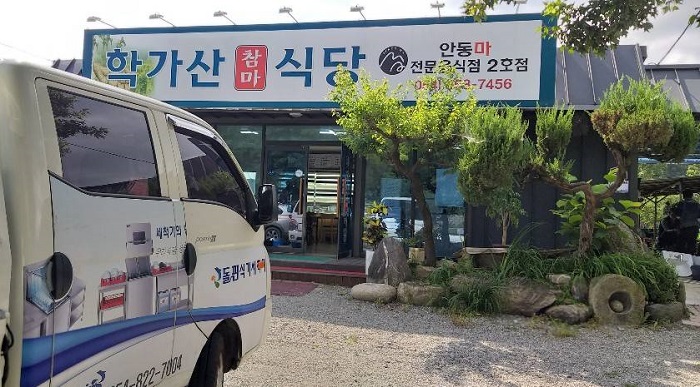
![Templo Bongjeongsa (봉정사) [Patrimonio de la Humanidad de la Unesco]](http://tong.visitkorea.or.kr/cms/resource/16/2654216_image2_1.jpg)
 Español
Español
 한국어
한국어 English
English 日本語
日本語 中文(简体)
中文(简体) Deutsch
Deutsch Français
Français Русский
Русский